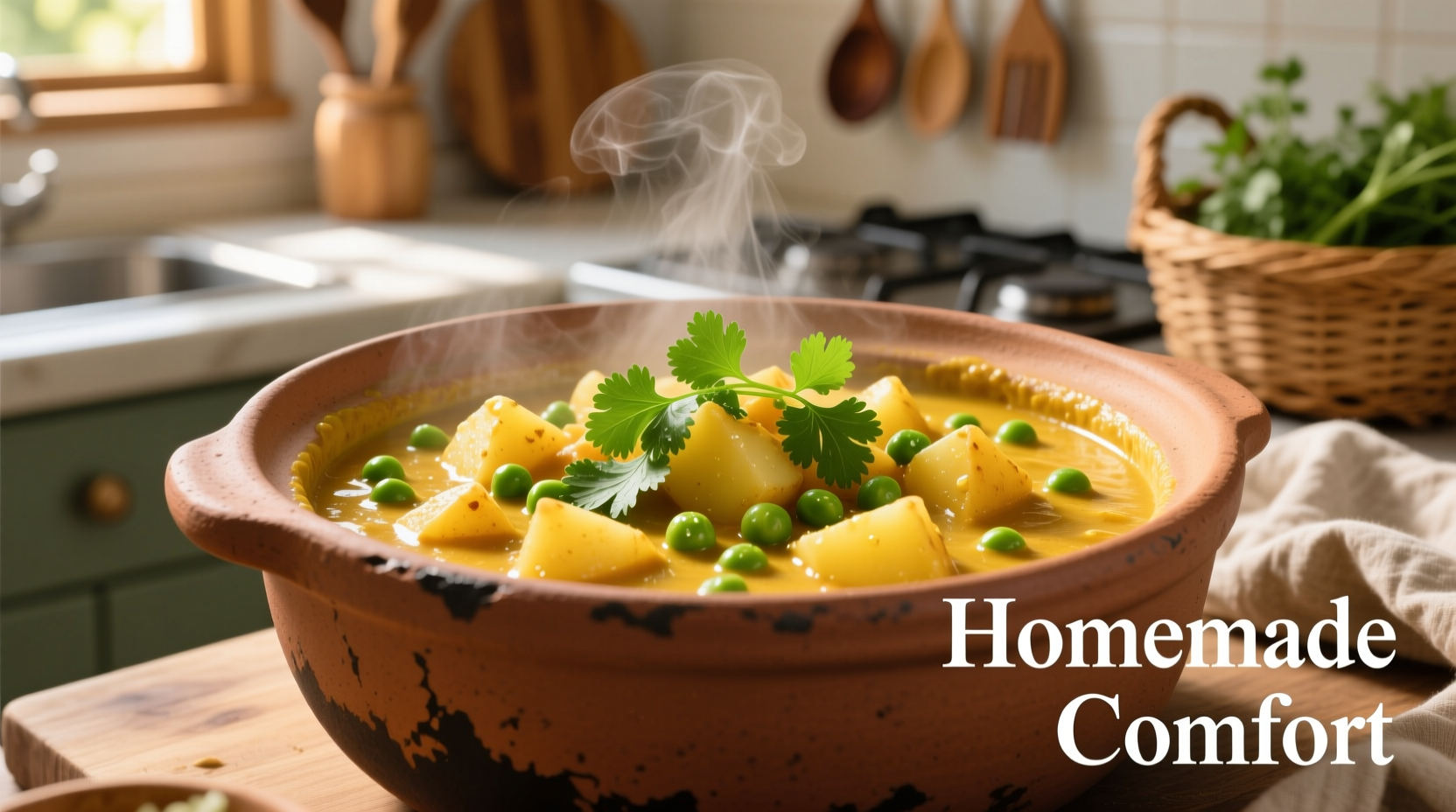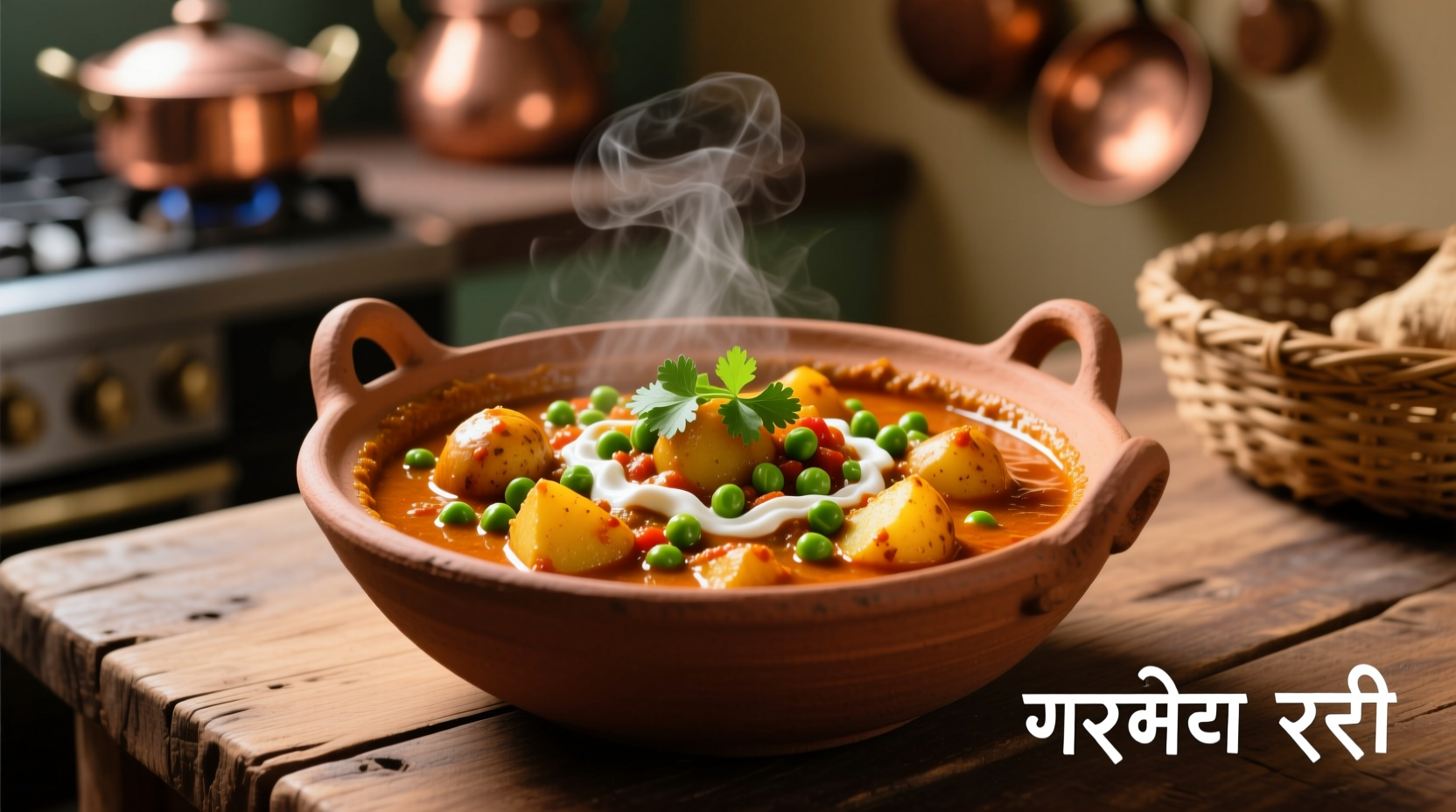Discover how to make restaurant-quality potato pea curry at home with this comprehensive guide. Whether you're a beginner cook or seasoned chef, you'll learn the authentic techniques that transform simple ingredients into a complex, aromatic curry that pairs perfectly with basmati rice or naan bread. This guide reveals the precise spice ratios, cooking methods, and cultural context that elevate your dish beyond basic recipes found online.
The Cultural Journey of Potato Pea Curry
While curry traditions span centuries across the Indian subcontinent, potato pea curry (known as Aloo Matar in Hindi) emerged during the British colonial period when potatoes were introduced to Indian agriculture. Historical food records from the 1850s show potatoes gradually replacing more expensive ingredients in traditional gravies, making this dish accessible to households across economic classes.
| Historical Period | Key Developments | Spice Profile Evolution |
|---|---|---|
| Pre-1800s | No potatoes in Indian cuisine | Pepper-based heat sources |
| 1800-1850 | Potatoes introduced through colonial trade | Chili peppers incorporated alongside traditional spices |
| 1850-1947 | "Aloo" dishes became household staples | Regional variations developed across India |
| Post-1947 | Global migration spread the dish worldwide | Adaptations for international palates emerged |
According to culinary anthropologists at the University of Delhi's Food History Department, potato pea curry represents India's adaptive culinary genius - transforming foreign ingredients into distinctly Indian dishes through spice mastery. Their research documents how regional variations developed based on local agricultural practices and cultural preferences.
Essential Ingredients for Authentic Flavor
The magic of potato pea curry lies in its balanced spice profile. Here's what you need for an authentic preparation:
Core Ingredients
- 2 medium potatoes (russet or Yukon gold), peeled and cubed
- 1 cup fresh or frozen peas
- 2 medium tomatoes, finely chopped or 1 cup canned crushed tomatoes
- 1 large onion, finely diced
- 2-inch ginger piece, grated
- 4 garlic cloves, minced
- 2 green chilies, slit lengthwise (adjust to taste)
Spice Blend (The Flavor Foundation)
- 1½ tsp cumin seeds
- 2 tsp coriander powder
- 1 tsp turmeric powder
- 1 tsp red chili powder (Kashmiri for color)
- ½ tsp garam masala
- 1 tsp kasuri methi (dried fenugreek leaves)
- Salt to taste

Step-by-Step Cooking Method
Follow these professional techniques for perfect texture and flavor development:
- Prepare ingredients: Cut potatoes into uniform ¾-inch cubes for even cooking. Soak in cold water for 10 minutes to remove excess starch.
- Toast whole spices: Heat 2 tbsp oil in a heavy-bottomed pot over medium heat. Add cumin seeds and toast until they sizzle and darken slightly (about 30 seconds).
- Sauté aromatics: Add onions and cook until golden brown (8-10 minutes). Add ginger, garlic, and green chilies, cooking for 2 more minutes until fragrant.
- Build the base: Stir in tomato, coriander powder, turmeric, and chili powder. Cook until oil separates from the mixture (12-15 minutes), stirring frequently.
- Add vegetables: Incorporate potatoes, peas, and ½ cup water. Cover and simmer on low heat for 15-18 minutes until potatoes are tender but not mushy.
- Finish with aromatics: Sprinkle garam masala and crushed kasuri methi. Stir gently and cook uncovered for 3 more minutes to thicken the gravy.
When Potato Pea Curry Works Best (And When It Doesn't)
Understanding the context boundaries ensures your curry succeeds every time:
- Ideal for: Weeknight dinners, vegetarian meal prep, beginner curry makers, pairing with rice or breads
- Limitations: Not suitable as a standalone dish (requires carbohydrate pairing), loses texture if frozen long-term, less complex than restaurant-style curries with multiple gravy layers
- Best served: Within 2 hours of preparation for optimal texture, at medium temperature (not piping hot), with fresh cilantro garnish
- Avoid when: Cooking for extremely time-constrained situations (requires 30+ minutes), serving to guests expecting elaborate presentation, or when fresh spices aren't available
Regional Variations Compared
India's diverse culinary landscape has created distinct regional interpretations of potato pea curry:
| Region | Key Differences | Signature Ingredients | Best Served With |
|---|---|---|---|
| North India | Creamy, tomato-based gravy | Fresh cream, kasuri methi | Naan, roti, basmati rice |
| Gujarat | Slightly sweet preparation | Jaggery, cumin | Thepla, buttermilk |
| Bengal | Mustard oil base, thinner gravy | Mustard paste, panch phoron | Steamed rice, luchi |
| South India | Coconut milk variation | Fresh coconut, curry leaves | Steamed rice, appam |
Pro Tips for Perfect Potato Pea Curry Every Time
Professional chefs emphasize these often-overlooked techniques:
- Don't rush the onion-tomato base: Cooking until oil separates creates depth of flavor that shortcuts can't replicate
- Par-cook potatoes: Boil potatoes for 5 minutes before adding to curry for perfect texture without overcooking peas
- Add peas late: Incorporate frozen peas during the last 5 minutes to maintain their vibrant color and texture
- Finish with acid: A squeeze of fresh lemon juice just before serving brightens the flavors
- Resting time matters: Let curry sit covered for 15 minutes before serving to allow flavors to meld
Storage and Reheating Guidelines
Proper storage maintains quality for future meals:
- Cool completely before refrigerating (within 2 hours of cooking)
- Store in airtight container for up to 4 days
- Freeze in portion-sized containers for up to 3 months
- Reheat gently on stove with 1-2 tbsp water to restore consistency
- Avoid microwave reheating which creates uneven texture
Troubleshooting Common Issues
Fix these frequent problems with professional solutions:
- Curry too watery: Simmer uncovered for 5-7 minutes or add 1 tsp cornstarch slurry
- Curry too thick: Gradually add warm water or vegetable broth until desired consistency
- Raw spice taste: Cook spice-tomato mixture longer before adding vegetables
- Potatoes mushy: Add par-cooked potatoes later in the process
- Not enough depth: Add ½ tsp amchur (mango powder) for tangy complexity











 浙公网安备
33010002000092号
浙公网安备
33010002000092号 浙B2-20120091-4
浙B2-20120091-4